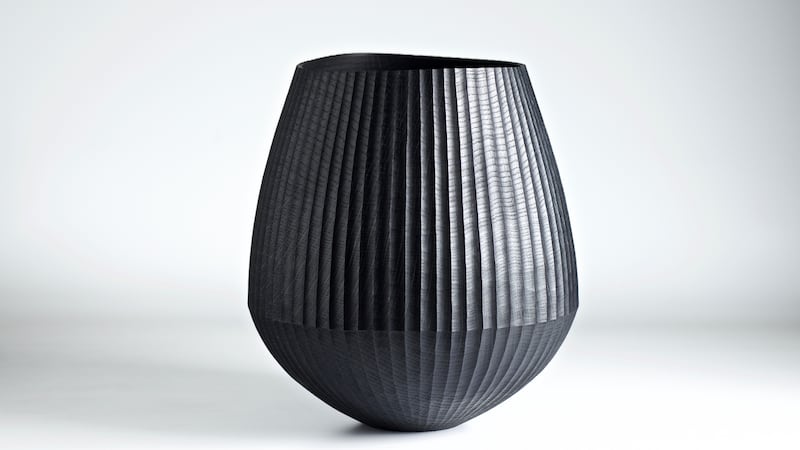Liam Flynn was one of Ireland's most respected craftspeople and an artist of international repute. Woodturned vessels of his are held in the permanent collections of the National Museum of Ireland, the Victoria and Albert Museum, and the Minneapolis Institute of Arts. In 2011 an image of his work was featured on a special-edition Irish postage stamp.
The Irish Arts Review has called Flynn "one of the world's most innovative and creative woodturners". Les Reed, a former chief executive of the Crafts Council of Ireland, recently stated his "long-standing personal belief that Flynn was Ireland's most outstanding craftsman in any discipline". London gallery-owner Sarah Myerscough considers that Flynn's practice "opened up the possibilities for craft to be valued as fine art sculpture".
Quiet, humble and thoughtful, Flynn was beloved as well as revered by his peers
Liam Flynn was born in 1969 in Abbeyfeale, Co Limerick, and lived there for his whole life. Working with wood was a family tradition, and Flynn inherited the workshop of his father and grandfather. As a boy he learned to make furniture, and as a teenager discovered lathe woodturning. He taught himself from books, artistic woodturning being then a recent and mostly North American movement with few Irish practitioners. He eventually sought out and received encouragement from such pioneers of the craft in Ireland as Liam O'Neill and Ciarán Forbes. Forbes would later praise Flynn as "a true artisan-craftsman" with "an unerring sense of line".
Exotic timbers
The trend in woodturning when Flynn started out was to emphasise the grain and other visual features of wood, and to seek out exotic timbers. Flynn was drawn more to form and line than the appearance of the wood itself, and preferred to work with locally sourced, plainer woods, especially oak. Influenced by American turner David Ellsworth, Flynn focused early on technically challenging "hollow form" vessels: thin-walled, vase-like shapes with a narrow opening at the top. He liked that such pieces announce themselves as aesthetic, not functional objects. He would produce innovative variations on this form throughout his career.

Flynn turned wood on the lathe while it was still wet – "green turning" – and subsequently allowed it to shift and change shape as it dried. The finished piece thus represents a dialogue between the artist's technical control and the chance movement of the wood; as curator Eleanor Flegg noted, "much of Flynn's skill lies in his ability to predict, and work with, this movement." He often blackened his pieces, which helped accentuate form over material, and carved fluting and other patterns onto them after the turning process. In one of his signature designs a second, inner rim creates the illusion of one piece sitting inside another. He experimented in recent years with a range of forms including open, barrel-like pieces and simpler, less intensely carved surfaces.
Fly-fishing
Flynn enjoyed fly-fishing in the local Feale river, and drew comparisons between the traits of a good salmon angler and a woodturner: “lots of patience, respect for our environment, diligent planning and the ability to handle disappointment.”
Quiet, humble and thoughtful, Flynn was beloved as well as revered by his peers. He developed an international reputation as an artist of sensitivity and skill. He was the inaugural winner of the Crafts Council of Ireland Bursary award in 2005, and in 1996 won the California Gold Medal at the Royal Dublin Society National Crafts Competition. An important US-published book on contemporary woodturning claimed: "Flynn is a modern master of the neo-classical wood vessel."
Flynn himself described his quest for excellence in form: “The challenge is to keep reinterpreting the forms . . . I’m always striving to find the perfect line.”
Flynn is survived by his partner, Mary Leahy, and mother Myra









